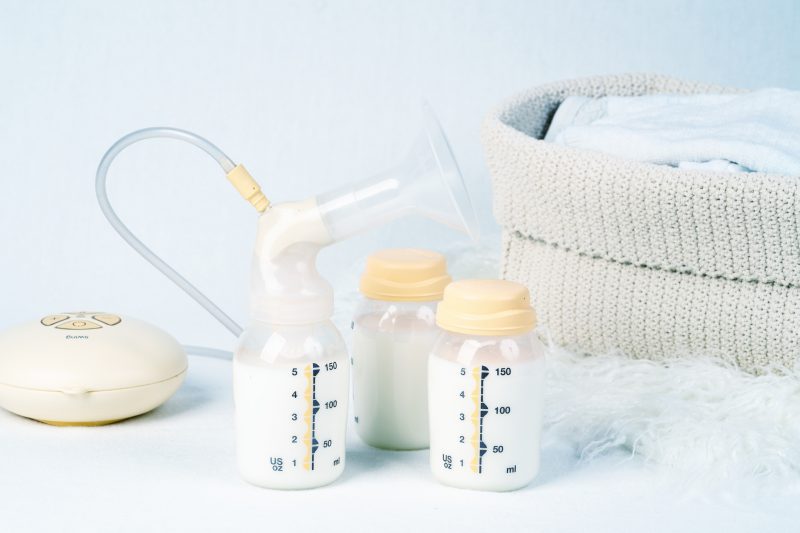 Pumping can be one of the most challenging aspects of transitioning back to work after maternity leave.
Pumping can be one of the most challenging aspects of transitioning back to work after maternity leave.
Whether you’re returning to the office or working from home, lack of time, space or simply the equipment to do it can all hinder mom’s ability to transition smoothly to breastfeeding and maintaining a career.
The good news is returning to work doesn’t have to mean the end of breastfeeding, said Carly Dulabon, MD, director of Akron Children’s Breastfeeding Medicine Division.
Follow her tips for a successful transition so you can continue breastfeeding long after your maternity leave has ended.
Planning ahead before baby
Even before giving birth, discuss your plans to breastfeed with your employer to set expectations about your needs ahead of time. You’ll want to discuss with your boss where and when you’ll be able to pump, as well as where you can store your breast milk.
Get familiar with the federal Break Time for Nursing Mothers law, which requires some employers to provide reasonable break time and functional space for employees to express milk for their nursing babies. Even if you’re working from home, you’ll need to schedule breaks for pumping.

Schedule pumping sessions on your work calendar to ensure no one plans a meeting during that time.
Maximizing milk supply
Follow these tips to help keep a strong and healthy flow:
- Maximize maternity leave. It takes about 2 to 3 weeks for your milk production to become well established, so if possible, try to stay home and nurse your baby for at least that long. Of course, a longer maternity leave is even better.
- Build milk supply. Several days or weeks before heading back to work, add a pumping session, maybe first thing in the morning or while baby is napping, to begin storing milk for caregivers. It’s a good way to practice pumping, too.
- Pump during feeding times. In general, it’s critical to pump at least every 3 hours when you’re separated from your baby to promote milk production. If you don’t, it will signal the breast to decrease production and can cause a drop in milk supply. How long should you pump? The duration can vary. Dr. Dulabon suggests pumping until your milk stops flowing and then continuing a minute or two more for full hormonal stimulation.
- Take nursing vacations. On the weekends, nurse your baby at the breast exclusively — and if possible, add in an extra feeding or 2 — to build your supply back up for Monday.
- Nourish your body. Self-care is incredibly important when you’re breastfeeding. Eat right, stay hydrated and get a good night’s rest to maintain your energy and a healthy milk supply.

It’s critical to pump at least every 3 hours when separated from your baby to signal milk production. The duration of pumping times can vary.
Finding your flow at work
- Schedule pumping sessions. Schedule pumping sessions as a meeting on your work calendar — even if you’re working at home — to ensure no one plans a meeting during that time. Plus, it’s easier to stay on track.
- Maximize pumping sessions. Bring a picture or video of your baby to help with letdown. Although most breast pumps have a letdown cycle that prepares your breasts to start expressing, these tactics are helpful — especially if you find it hard to relax enough to get your milk really flowing. “Stress can drop milk supply by inhibiting letdown,” warned Dr. Dulabon. “Meditation or hand massage prior to pumping can help, as well.”
- Dress the part. Wear dresses or tops that are looser and allow you pumping access without having to take it off, such as cross over or V-neck shirts, and button downs. Also, wearing a pumping bra can help you squeeze in a pumping session during a busy day.
- Make sanitizing efficient. Extra precautions are necessary to keep you and your baby safe from infection. Bring hand sanitizer with you, in case a sink isn’t available. Clean your hands before and after pumping, and before touching any pump or bottle parts. “Rather than washing and sanitizing pump parts after every session, put them in a plastic bag and store them in the refrigerator until your next pumping session,” said Dr. Dulabon, who suggests sterilizing microwave bags as a quick way to clean pumping parts. “Sanitizing bottles and parts once a day is only necessary for premature babies.”
- Find support. Talk to other women in your office to find someone who has been in your shoes and can help you navigate the transition. A lactation specialist also can offer invaluable breastfeeding and pumping tips.
If you’re struggling and have questions or concerns about breastfeeding and transitioning to work, call 330-543-4500 to schedule an appointment with Akron Children’s Breastfeeding Medicine Division.










